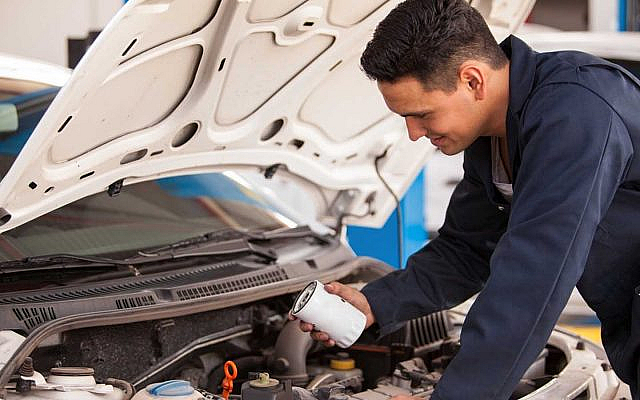دسمبر . 11, 2024 09:06 Back to list
How to Replace the Cabin Air Filter in Your Honda Pilot
Understanding the Importance of the Honda Pilot Cabin Air Filter
The Honda Pilot is renowned for its spaciousness, reliability, and family-friendly features. However, like any vehicle, maintaining its components is essential for optimal performance and comfort. One often-overlooked part of this maintenance is the cabin air filter. This component plays a crucial role in the driving experience, impacting everything from air quality to the efficiency of the vehicle’s heating and cooling systems. In this article, we will discuss the importance of the Honda Pilot cabin air filter, how it functions, and the steps you can take to ensure it remains in top condition.
What is the Cabin Air Filter?
The cabin air filter is a vital component of the climate control system in the Honda Pilot. Its primary purpose is to filter out pollutants, dust, pollen, and other particulates from the air that enters the passenger cabin. This ensures that the air you breathe while driving is clean and healthy. Without a properly functioning cabin air filter, allergens and contaminants can accumulate in the vehicle, leading to poor air quality and potential health issues for passengers, especially for those who suffer from allergies or respiratory conditions.
How Does It Work?
The cabin air filter is strategically located within the vehicle’s ventilation system. As air flows into the cabin, it passes through the filter. The filter captures airborne particles, thereby preventing them from entering the interior of the vehicle. Most cabin air filters are made from pleated paper or synthetic materials, which are designed to trap a wide range of contaminants effectively. Over time, however, filters can become saturated with dirt and debris, reducing their effectiveness.
Signs That Your Cabin Air Filter Needs Replacement
It is recommended to check and replace the cabin air filter regularly, typically every 15,000 to 30,000 miles or once a year, depending on driving conditions. Here are some common signs that it might be time to replace your Honda Pilot’s cabin air filter
1. Reduced Air Flow If you notice that the airflow from the heating and cooling systems has decreased significantly, it could be a sign that the cabin air filter is clogged and needs to be replaced.
2. Unpleasant Odors A musty or unpleasant smell emanating from the vents can indicate mold or mildew growth on the filter, suggesting that it should be changed.
3. Increased Allergies If you or your passengers are experiencing increased allergy symptoms while driving, it may be due to a dirty cabin air filter that is no longer filtering out allergens effectively.
honda pilot cabin air filter

4. Visual Inspection If you have access to the cabin air filter, a quick visual inspection can reveal whether it is dirty or clogged. A clean filter is generally white or off-white, while a dirty one will appear dark and may have visible debris.
How to Replace the Cabin Air Filter in Your Honda Pilot
Replacing the cabin air filter in your Honda Pilot is a straightforward process that you can do yourself with a few basic tools. Here’s a step-by-step guide
1. Locate the Filter The cabin air filter is usually found behind the glove compartment. To access it, open the glove compartment and remove any items inside. You may need to unclip or unscrew a few parts to get to the filter compartment.
2. Remove the Old Filter Once you gain access, carefully pull out the old cabin air filter. Take note of how it is positioned to ensure the new one goes in the same way.
3. Install the New Filter Insert the new cabin air filter into the compartment, ensuring that it is positioned correctly for optimal airflow.
4. Reassemble the Glove Compartment Once the new filter is in place, put everything back together and ensure that all clips and screws are secured.
5. Check Functionality Turn on the vehicle and run the air conditioning or heating to ensure that air is flowing effectively and that there are no strange odors.
Conclusion
Maintaining the cabin air filter in your Honda Pilot is essential for ensuring good air quality and overall comfort for your passengers. Regular inspections and timely replacements will enhance your driving experience, promote better health, and help maintain the longevity of your vehicle’s HVAC system. By taking the time to understand and care for this small yet significant component, you’ll ensure that you and your family can enjoy a pleasant ride in your Honda Pilot for years to come.
-
Toyota Corolla Hatchback Cabin Air Filter – High Efficiency & Easy Installation
NewsJul.08,2025
-
Premium Canister Fuel Filter Supplier High Quality Oil Filtration Solutions
NewsJul.08,2025
-
Premium Car Filter Oil Solutions Leading Car Oil Filter Exporter Hyundai Car Oil Filter Exporters
NewsJul.08,2025
-
Buy 17x21x1 Air Filter – Improve Air Quality & HVAC Efficiency Affordable Air & Cabin Air Filter Cost
NewsJul.07,2025
-
High-Performance Filter Element Fuel – Durable, Efficient & Cost-Effective Solutions
NewsJul.07,2025
-
High-Quality Engine Filter and Cabin Filter for Superior Airflow Affordable Cabin and Engine Air Filter Cost
NewsJul.07,2025


